Butter Chicken
This post may contain affiliate links. Read my full disclosure policy.
This easy butter chicken recipe features ultra-tender chicken simmered in a rich, creamy, spice-infused tomato sauce.
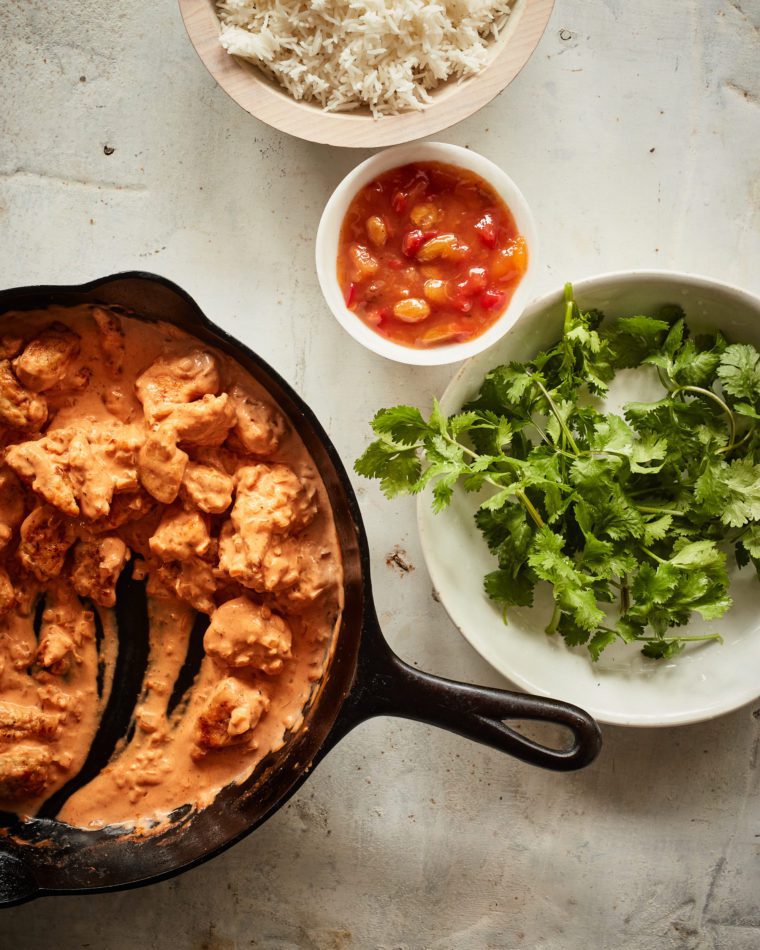
Photo by Johnny Miller (Clarkson Potter, 2021)
A staple menu item in many Indian restaurants in the U.S., butter chicken, also known as Murgh Makhani, was supposedly created when a restaurateur in India combined leftover chicken with a tomato sauce enriched with butter and cream. Traditionally, the chicken for this dish is marinated in yogurt, lemon, and spices and then cooked in a clay oven called a tandoor.
To save time and make the dish home cook-friendly, I sauté unmarinated, seasoned chicken in a skillet and then briefly simmer it in a creamy, spice-infused tomato sauce. This results in ultra-tender chicken. In fact, one reader remarked that this must be called “butter chicken” because the chicken is so tender, it’s like “buttah!” Along with basmati rice or naan, I love a little mango chutney on the side; it adds a delicious gingery sweetness that complements the chicken.
Table of Contents
“If I could give you ten stars for this recipe, I would…As good as any take-out Indian food I have ever eaten. A definite winner!”
What You’ll Need To Make Butter Chicken
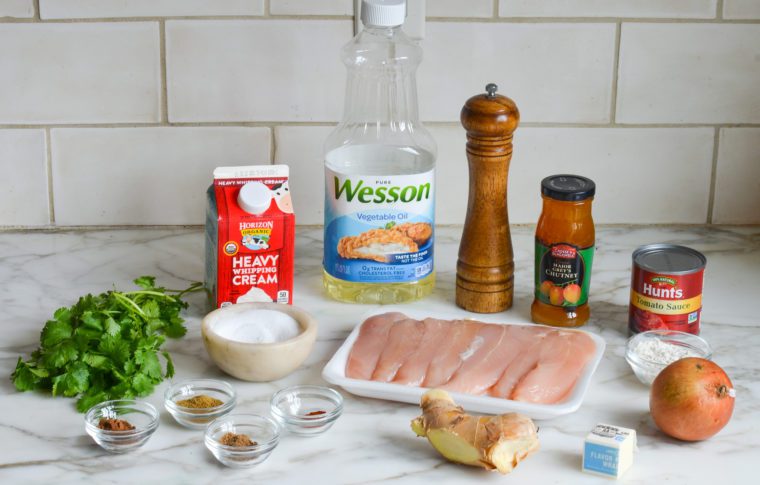
- Chicken Tenderloins: Tenderloins are lean, ultra-tender, and cook quickly, making them a great choice. Boneless skinless breasts may be substituted.
- All-Purpose Flour: Used to lightly coat the chicken before cooking. This not only helps to give the chicken a flavorful crust when browned but also aids in thickening the sauce once the chicken is added back to the pan with the other ingredients.
- Onion and Ginger: These aromatics form the flavor base of the dish.
- Garam Masala, Coriander, Cumin, and Cayenne Pepper: This blend of spices is crucial for achieving the authentic, richly layered flavor profile of butter chicken.
- Canned Tomato Sauce: Acts as the base for the sauce, offering a tangy sweetness that balances the richness of the cream and the complexity of the spices.
- Heavy Cream: Adds richness and creaminess to the sauce.
- Cilantro: Brightens up the dish with color and herbal freshness.
- Jump to the printable recipe for precise measurements
Step-by-Step Instructions
In a medium bowl, sprinkle the chicken pieces evenly with 3/4 teaspoon of the salt and 1 teaspoon of the garam masala; toss to coat evenly.
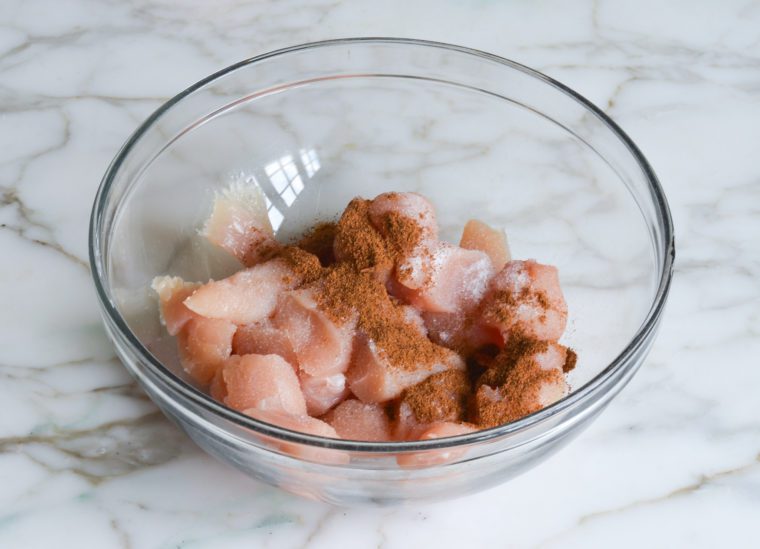
Add the flour.
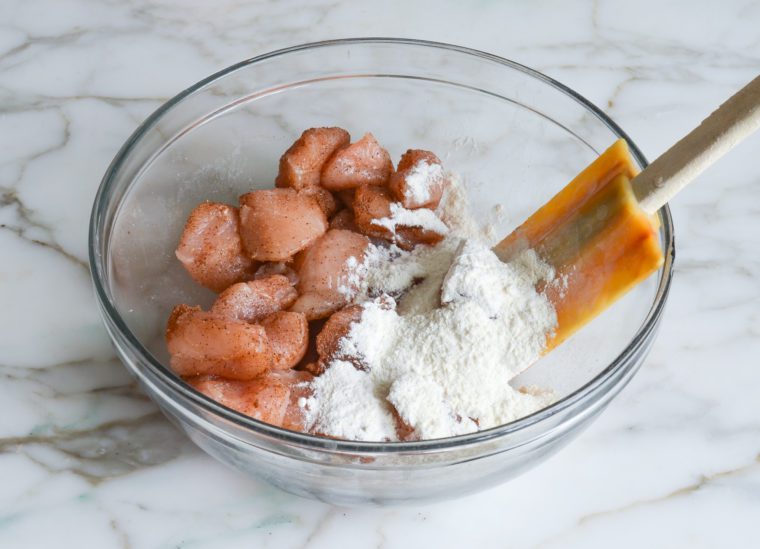
Toss again, making sure the chicken is well coated.
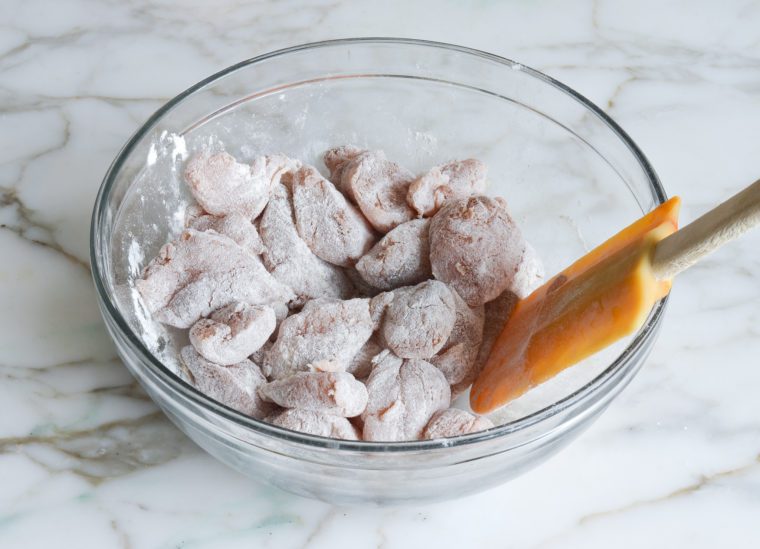
In a large nonstick skillet, heat 1 tablespoon of the butter and the oil over medium-high heat. When the fat is hot and shimmering, add the chicken in a single layer and cook, without stirring, until the chicken is lightly golden on the underside, about 3 minutes.
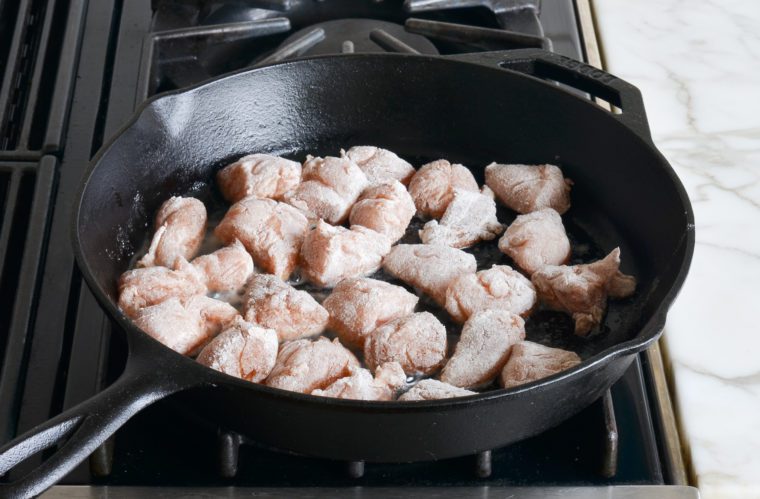
Using tongs, turn the chicken pieces over and cook until just cooked through, 2 to 3 minutes more. Using the tongs, transfer the chicken to a plate and set aside while you make the sauce (you’ll use the skillet in the next step—there’s no need to wash it).
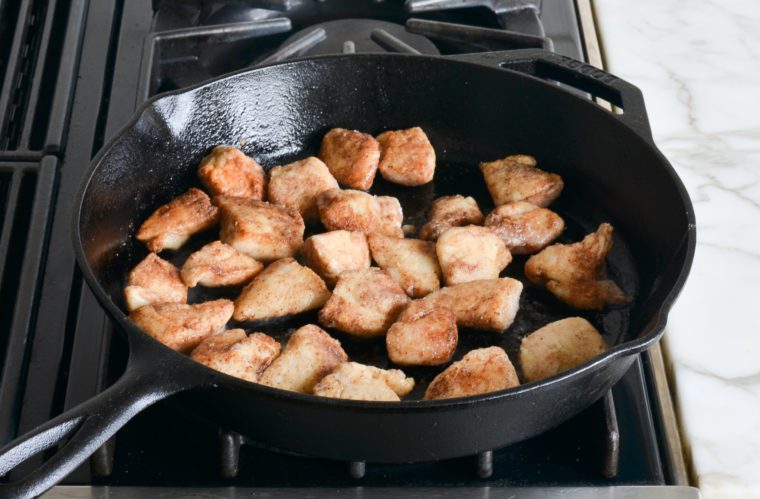
Melt the remaining tablespoon butter in the same skillet over medium heat. Add the onion and ginger and cook, stirring frequently, until softened, 3 to 4 minutes.
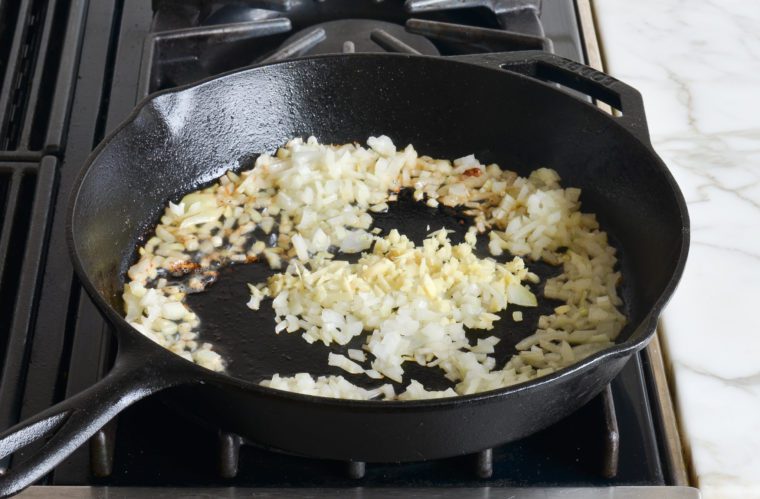
Add the coriander, cumin, cayenne (if using), and remaining teaspoon of garam masala; stir and cook 1 minute more.
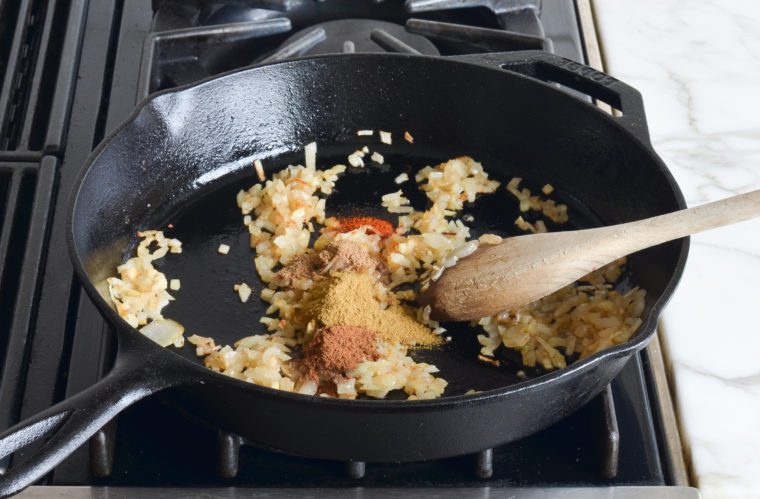
Add the tomato sauce, cream, sugar, pepper, water, and the remaining 1/2 teaspoon salt. Bring to a gentle boil, then reduce the heat and simmer, uncovered, until slightly thickened, about 3 minutes.
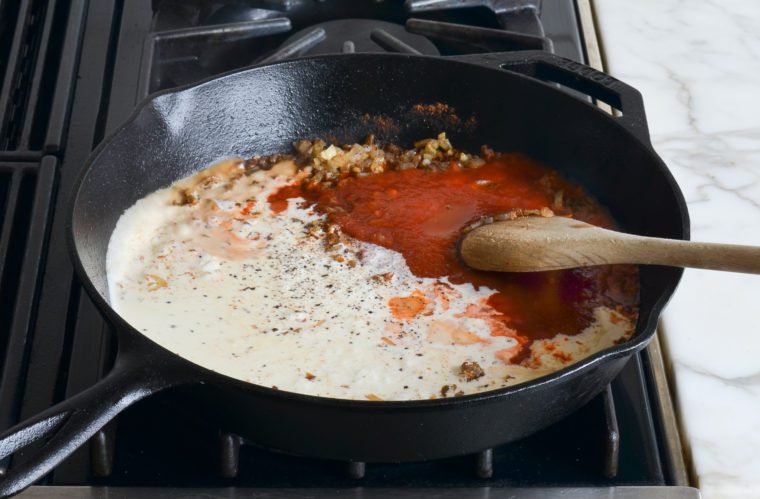
Add the chicken along with any accumulated juices, to the sauce.
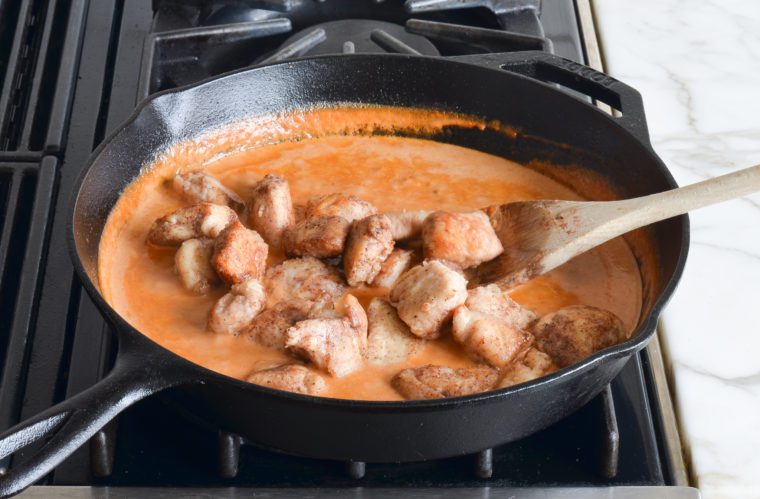
Simmer a few minutes, until the chicken is warmed through.
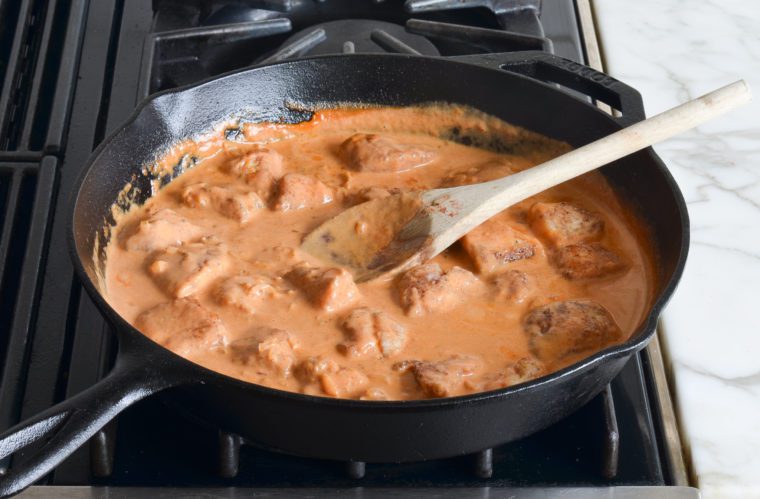
Taste the sauce and adjust the seasoning if necessary. Sprinkle with the cilantro, if using.
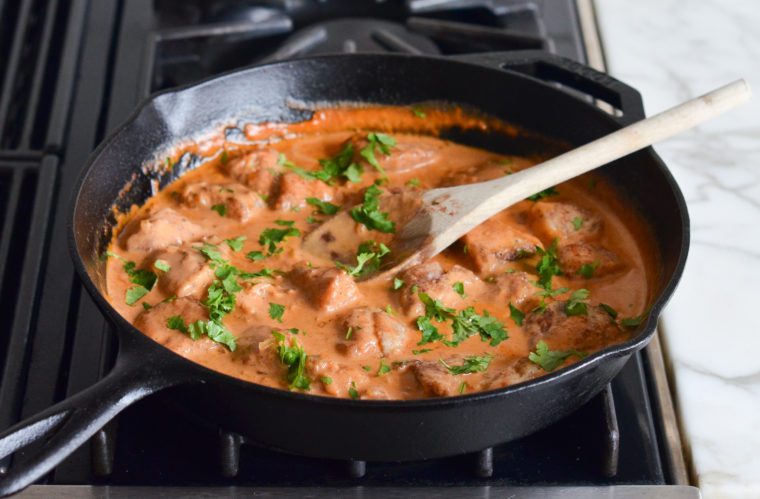
Frequently Asked Questions
Chicken tenderloins are the perfect choice for this dish due to their exceptional tenderness and rapid cooking time. While boneless, skinless chicken breasts are also a good option, they tend to be less forgiving and may become dry if overcooked.
Typically, chicken tenderloins come with a white tendon attached, which can be somewhat tough to chew. To improve the texture, I recommend removing this tendon prior to cooking. Using kitchen shears, simply grasp the tip of the tendon with your fingers and cut it where it connects to the meat. This quick step ensures every bite of chicken is perfectly tender and enjoyable.
Yes, simply prepare the dish as instructed, allow it to cool, and then store it in an airtight container in the refrigerator for 3 to 4 days. Reheat gently on the stove over low heat, adding a little water if the sauce has thickened too much during storage.
Butter chicken is traditionally cooked with ghee, a type of clarified and fermented Indian butter that has a higher smoke point than plain butter. Since I don’t have ghee on hand in my kitchen and butter burns over high heat, I use a combination of butter and oil to get a similar effect; oil raises the smoke point of the fat and prevents the milk solids in the butter from burning.

Video Tutorial
You May Also Like
Butter Chicken
This easy butter chicken recipe features ultra-tender chicken simmered in a rich, creamy, spice-infused tomato sauce.
Ingredients
- 1½ lbs chicken tenderloins, tendons trimmed, or boneless skinless breasts, cut into 1½-inch pieces (see note)
- 1¼ teaspoons salt
- 2 teaspoons garam masala
- 3 tablespoons all-purpose flour
- 2 tablespoons unsalted butter
- 1 tablespoon vegetable oil
- 1 medium yellow onion, finely chopped (about 1 cup)
- 1½ tablespoons finely chopped fresh ginger (from a 2-inch knob) (see note)
- 1 teaspoon ground coriander
- 1¾ teaspoons ground cumin
- ⅛ teaspoon cayenne pepper (optional)
- 1 (8-ounce) can tomato sauce
- 1 cup heavy cream
- ¾ teaspoon sugar
- ¼ teaspoon freshly ground black pepper
- 3 tablespoons water
- 3 tablespoons chopped fresh cilantro (optional)
For Serving (optional)
- Basmati rice
- Mango chutney (such as Major Grey's)
Instructions
- Pat the chicken dry with a paper towel. In a medium bowl, sprinkle the chicken pieces evenly with ¾ teaspoon of the salt and 1 teaspoon of the garam masala; toss to coat evenly. Add the flour and toss again, making sure the chicken is well coated.
- In a large (12-inch) nonstick skillet, heat 1 tablespoon of the butter and the oil over medium-high heat. When the fat is hot and shimmering, add the chicken in a single layer and cook, without stirring, until the chicken is lightly golden on the underside, about 3 minutes. Using tongs, turn the chicken pieces over and cook until just cooked through, 2 to 3 minutes more. Transfer the chicken to a plate and set aside while you make the sauce (you’ll use the skillet in the next step—there’s no need to wash it).
- Melt the remaining tablespoon butter in the same skillet over medium heat. Add the onion and ginger and cook, stirring frequently, until softened, 3 to 4 minutes. If the onion starts to brown, reduce the heat. Add the coriander, cumin, cayenne (if using), and remaining teaspoon of garam masala; stir and cook 1 minute more. Add the tomato sauce, cream, sugar, pepper, water, and the remaining ½ teaspoon salt. Bring to a gentle boil, then reduce the heat and simmer, uncovered, until slightly thickened, about 3 minutes.
- Add the chicken, along with any accumulated juices, to the sauce and simmer just a few minutes until the chicken is warmed through. Taste the sauce and adjust the seasoning if necessary. Sprinkle with the cilantro, if using, and serve with basmati rice and mango chutney. (Note that the sauce will thicken as it sits; thin with a bit of water if necessary.)
- Note: Chicken tenderloins are ideal for this dish as they are ultra-tender and cook quick quickly. Boneless, skinless breasts work well too, but they are less forgiving and can become dry if overcooked. The tenderloins typically have a white tendon attached to them. They can be a little tough to chew, so I like to remove them with kitchen shears before cooking. Just pinch the tip of the tendon with your finger and snip where the tendon meets the chicken.
- Note: This dish is traditionally cooked with ghee, a type of clarified and fermented Indian butter that has a higher smoke point than plain butter. Since I don’t have ghee on hand in my kitchen and butter burns over high heat, I use a combination of butter and oil to get a similar effect (oil raises the smoke point of the fat and prevents the milk solids in the butter from burning).
- Make-Ahead Instructions: Prepare the dish as instructed, allow it to cool, and then store it in an airtight container in the refrigerator for 3 to 4 days. Reheat gently on the stove over low heat, adding a little water if the sauce has thickened too much during storage.
Pair with
Nutrition Information
Powered by ![]()
- Per serving (4 servings)
- Calories: 793
- Fat: 59 g
- Saturated fat: 23 g
- Carbohydrates: 40 g
- Sugar: 6 g
- Fiber: 4 g
- Protein: 28 g
- Sodium: 1,063 mg
- Cholesterol: 167 mg
This website is written and produced for informational purposes only. I am not a certified nutritionist and the nutritional data on this site has not been evaluated or approved by a nutritionist or the Food and Drug Administration. Nutritional information is offered as a courtesy and should not be construed as a guarantee. The data is calculated through an online nutritional calculator, Edamam.com. Although I do my best to provide accurate nutritional information, these figures should be considered estimates only. Varying factors such as product types or brands purchased, natural fluctuations in fresh produce, and the way ingredients are processed change the effective nutritional information in any given recipe. Furthermore, different online calculators provide different results depending on their own nutrition fact sources and algorithms. To obtain the most accurate nutritional information in a given recipe, you should calculate the nutritional information with the actual ingredients used in your recipe, using your preferred nutrition calculator.

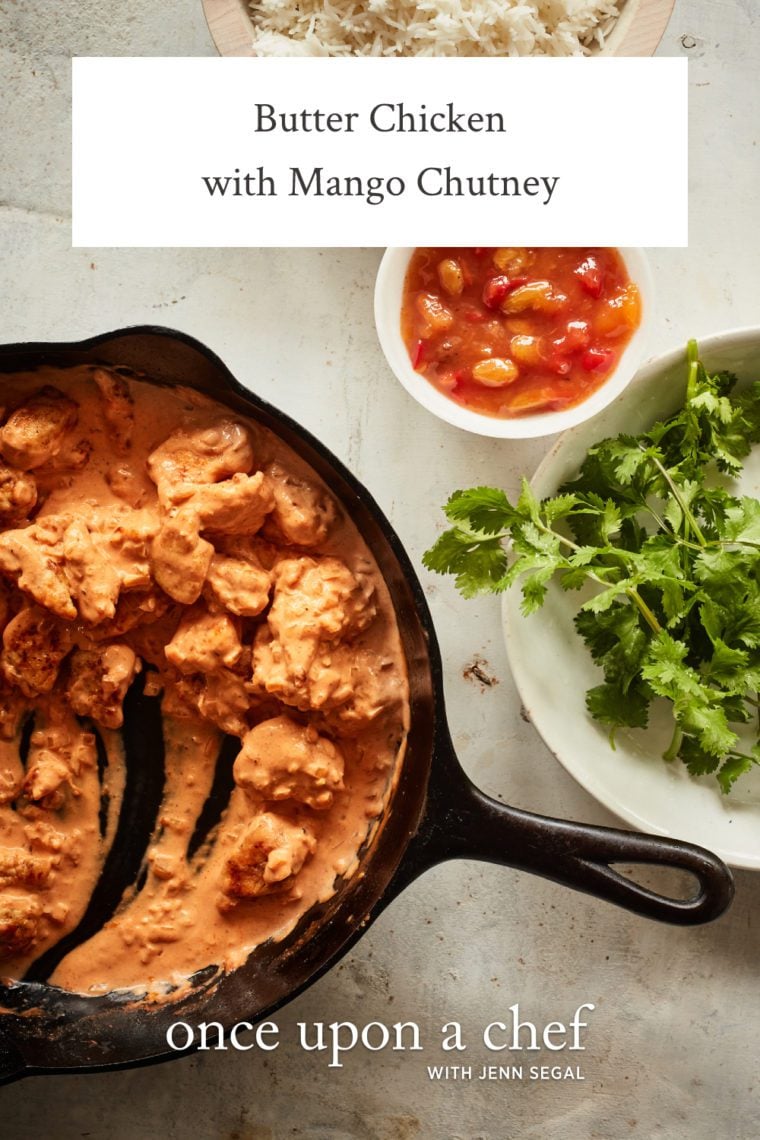
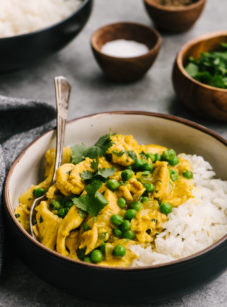
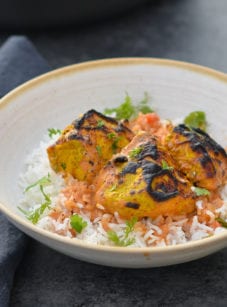
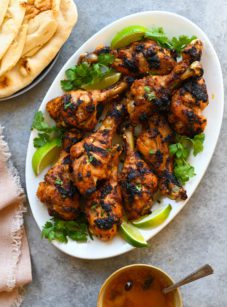
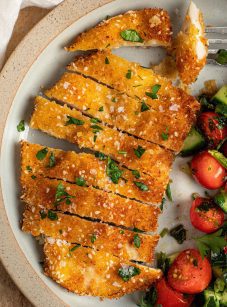
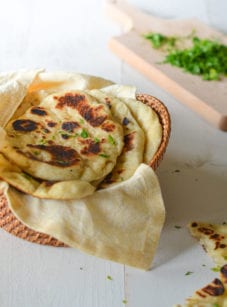
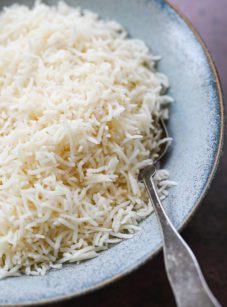
I’ve made over 30 recipes from your website and this is one of my favorites. Can I request adding a simple dal recipe to your list of potential recipes to develop? I have a feeling you’d knock it out of the park! I’m very grateful you have this website and share your talents with us.
So glad you like this and other recipes from the blog! I will add dal to my list of recipes to potentially develop – thanks for the suggestion as I’m always looking for new inspiration. 🙂
Can this recipe be made the night before it is to be served and gently warmed on the stove before serving the next day?
Yep!
Could half and half, or a combination of half and half and yogurt be substituted for the cream?
Hi Carol, I would go with the half and half, but just keep in mind that the sauce won’t thicken up as nicely.
Hey there. I’m a 41 year old gent from Australia. I use your recipes from online and your book almost exclusively. I made this for my family again tonight, and they all smashed it! I just thought I should write a comment and let you know that you have pretty much taught me to cook, and actually enjoy food in a way I never thought I would. I have never had a bad meal from our recipes. Thankyou!
💗
I love a good butter chicken and this did not disappoint, will be on my regular rotation. I would like to serve this with Aloo Gobi, unfortunately I can’t find my recipe which I loved. And I was wondering if my favourite chef had one or could develop one 🙏. Thanks Jen for making cooking and eating so enjoyable!
Glad you enjoyed this! As of now, I don’t have a proven recipe for Aloo Gobi – I’m sorry! I’ll have to add that to my list of recipes to potentially develop. 🙂
Cooked this for my Australian family this evening. It got rave reviews! My son-in-law said it was the best butter chicken he’s ever had. Another A-one recipe, Jenn. They asked me to make it again before I return home to Canada. Thanks.
It’s hard to believe such an easy, quick recipe could be this good! The spice combination is just right. I made “Butter Tofu” for dinner tonight, and it is just as good as the chicken version – rich, creamy and delicious. It’s a winner!
Absolutely love your recipes! Everything I try turns out delicious the first time and is a huge hit. Thanks for perfecting it for us! Being able to find nutrition info in MyFitnesPal is also very nice.
Can I substitute dried ginger for the fresh?
Yes, but you’ll need less — I’d use a heaping 1/4 teaspoon. Enjoy!
If I could give you ten stars for this recipe, I would. Outstanding! I have made many recipes from your blog, and this is now my favorite. The flavors were even better when I reheated the leftovers. Wow. As good as any take-out Indian food I have ever eaten. A definite winner!
This is a general question-NOT-for posting on this recipe:
When I choose PRINT, there is no print preview and it seems most recipes take 2 pages. Is this specific to my computer or your format offers no print preview. To overcome this, I have to copy/paste to a document and reformat. [If you received my first comment a few minutes ago, I was asking about there not being a photo in the Print version, but I missed the fact I was copying & pasting into Word and the photo wasn’t coming with it. Sorry–you do offer the photo in your Print layout–just wish there was a print preview OR recipes were most always limited to 1 page. THANK YOU again!
Hi Claire, when you’re viewing the full recipe (near the bottom of the page), look in the upper righthand corner of that box – you’ll see an icon there that looks like a printer. Is that what you’re clicking on to print? If so, you should have a dialogue box pop up with printing options and a print preview option (just like you would when printing anything else). Prior to the dialogue box popping up, you should see a page with the recipe. In the upper right corner, there’s a box that you should be able to check/uncheck to include a pic of the recipe (or not). Hope that helps!